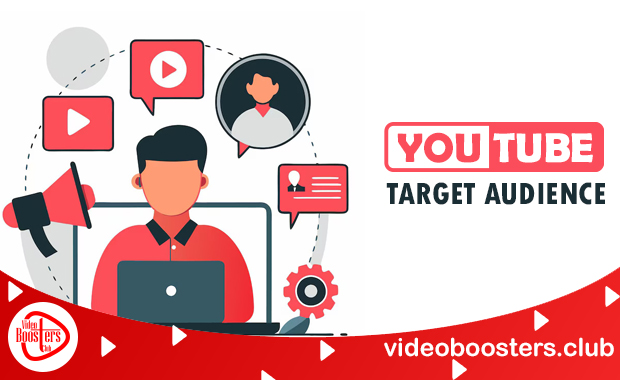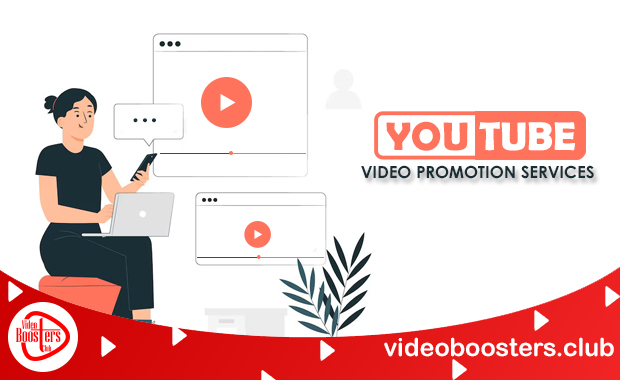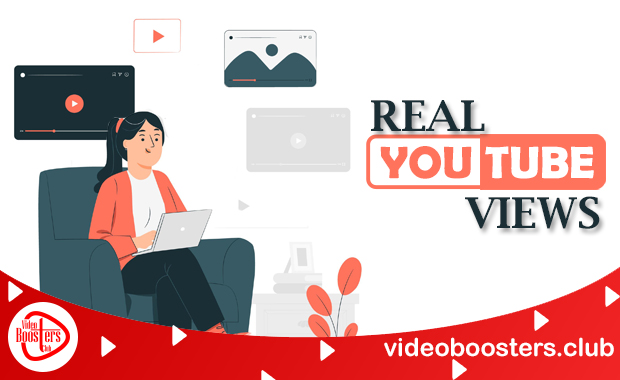
If you’re creating content but struggling to grow your YouTube channel, you may be missing one key element: understanding your YouTube target audience.
Knowing your target audience is the key to becoming a successful YouTube content creator. It influences what videos you produce, how you present them, when you publish, and even how you promote them.
If you are not able to define your audience on YouTube, your content will be lost in this crowded platform. But when you know exactly who you’re speaking to, your content becomes more intentional, relatable, and engaging.
Many creators focus on views and subscribers, but forget the importance of targeting. A well-defined YouTube target audience increases engagement, boosts watch time, improves YouTube SEO, and builds a loyal community that supports your channel’s growth.
In this guide, we’ll explore what a target audience is, why it matters, and the 7 simple steps you can take to identify and connect with your ideal YouTube viewers.
What is YouTube Target Audience?
The particular demographic that is most likely to appreciate, interact with, and gain from your content is known as your YouTube target audience.
This demographic group is determined by factors such as:
- Age
- Gender
- Location
- Language
- Interests
- Viewing habits
- Pain points or issues they face in daily life and want them to solve
For example, a tech channel’s audience may consist of males aged 18–34 who are interested in smartphones, app reviews, and gaming. On the other hand, a parenting channel may target mothers aged 25–40 interested in child nutrition and parenting hacks.
By narrowing your focus, you can craft content that resonates deeply with viewers, which leads to better engagement and higher retention.

Understand the Importance of Target Audience on YouTube
Defining your YouTube target audience isn’t just a nice-to-have strategy—it’s a fundamental building block for a successful YouTube channel. With millions of creators uploading content daily, standing out requires more than good visuals or catchy thumbnails. You need to speak directly to the people who will genuinely care about what you’re sharing.
When you know who your content is for, every decision you make—whether it’s about your video topic, style, video thumbnail, or posting schedule—becomes intentional and strategic.
Here’s why identifying your target audience on YouTube is so critical:
1. Creates Purposeful and Relevant Content
Imagine launching a channel about plant-based recipes but not knowing whether your audience is beginners, busy professionals, or vegan athletes. Every single group has different requirements and expectations.
- Beginners may want simple 3-ingredient meals.
- Busy professionals may prioritize quick-prep recipes.
- Athletes might need high-protein plant-based options.
Your content becomes relevant when it directly addresses the issue or preferences of your audience. Relevance is what keeps people watching longer, clicking more, and subscribing faster.
Relevance = Retention. YouTube favors videos with longer watch times, so speaking to the right viewers can directly influence your ranking in search and recommendations.
2. Improves Click-Through Rate (CTR) and Watch Time
Your YouTube target audience determines how well your content performs in key metrics like CTR and watch time.
- CTR (Click-Through Rate): This measures how often people click on your video after seeing it. A high CTR means your title and thumbnail resonate with your audience.
- Watch Time: If your content holds viewers’ attention, YouTube is more likely to recommend it.
When you know your viewers’ behavior, you can tailor your hooks, intros, and storytelling to meet their preferences. For example, younger audiences tend to prefer fast-paced editing and vibrant visuals, while older audiences may value clear explanations and slower pacing.
According to YouTube Creator Academy, high audience retention signals video quality and can lead to broader recommendations.
3. Builds a Loyal and Engaged Community
One of the most powerful advantages of identifying your target audience is the ability to build a community. When your content consistently addresses the same group’s interests and values, viewers begin to trust you, interact with you, and return for more.
Community benefits include:
- Higher engagement through comments, likes, and shares
- Word-of-mouth promotion
- Better feedback for future video ideas
- More participation in live streams or polls
A focused audience feels seen and heard. They’re more likely to support you through memberships, donations, or purchasing your products or services.
4. Helps You Grow Faster—Organically
YouTube algorithm favors consistency and viewer satisfaction. When the algorithm sees that your videos consistently attract the same type of viewer, it begins recommending your content to similar audiences.
Let’s say your videos consistently appeal to beginner digital marketers aged 20–30. YouTube will start surfacing your content in front of more users in that demographic through its recommendation engine.
This “audience signal” becomes stronger with each new upload, helping you:
- Appear on the Home page
- Show up in Suggested videos
- Rank higher in Search results
The stronger your target audience signal, the more organic reach your channel gets—without spending a dime on ads.
5. Attracts Better Brand Partnerships and Monetization Opportunities
Brands want to reach specific customers—not random viewers. A well-defined YouTube target audience makes your channel more attractive to advertisers and sponsors because it tells them exactly who they’ll be speaking to.
If your content clearly appeals to a niche audience (e.g., fitness moms, coding students, aspiring musicians), brands can see value in partnering with you to access that specific segment.
This often leads to:
- Higher CPMs (Cost Per Mille) on AdSense
- Better sponsorship deals
- Affiliate marketing success
For instance, a channel targeting college students can attract partnerships with ed-tech brands, stationery companies, or affordable lifestyle services.
7 Easy Steps To Determine Your YouTube Target Audience
Now that you understand the “what” and “why,” let’s dive into the “how.” Here are 7 simple yet effective steps to determine your YouTube target audience.
1. Analyze Your Existing Audience (If You Have One)
If you’ve already started creating content, your YouTube Analytics is a goldmine of information about your current viewers. This is the best place to start your investigation.
Demographics
When you navigate to your YouTube Studio dashboard, you need to find and click the “Analytics” tab after navigating to your YouTube Studio. Under the “Audience” section, you’ll find data on your viewers’ age, gender, and geographic location. Are your viewers predominantly male or female? What is the most common age range? Where in the world are they watching from?
This data provides a foundational understanding of who is currently engaging with your content. For instance, if you discover a significant portion of your audience is from a non-English speaking country, you might consider adding translated subtitles to your videos.
Watch Time
Pay close attention to which of your videos have the highest watch time and audience retention. These metrics indicate what type of content your audience finds most engaging. Look for patterns in the topics, formats, and lengths of these top-performing videos.
Other Channels Your Audience Watches
The “Audience” tab also reveals other channels and videos that your viewers are watching. This is invaluable information. It helps you understand their broader interests and identify potential collaborators or competitor channels to analyze.
When Your Viewers Are on YouTube
This great feature displays you the days and times your audience is most active on YouTube. Scheduling your uploads and live streams around these peak times can significantly increase views on YouTube and also boost engagement.
2. Identify the Niche and Value Proposition of Your Channel
Before you can get the right people to watch your channel, you need to be very clear about what it has to offer. Ask yourself these fundamental questions:
What is your channel’s primary focus or niche?
Be as specific as possible. Instead of “cooking,” it could be “quick and easy vegan recipes for busy professionals.” A well-defined niche helps you stand out in a crowded space.
What unique value do you provide?
What makes your channel different from others in the same niche? Is it your personality, your unique perspective, your in-depth knowledge, or your entertaining editing style? This is what sets you apart from the others.
What problems do you solve for your viewers?
Does your content educate, entertain, inspire, or a combination of these? Knowing the main point of your content will help you figure out who will get the most out of it.
Answering these questions will help you create a clear and compelling channel identity that naturally attracts the right YouTube target audience.
3. Research Your Competition
Your competitor analysis can tell you a lot about your potential audience. By analyzing successful channels in your niche, you can learn a lot about what works and who is watching.
Identify Your Competitors
Look for channels that create similar content and have a similar or slightly larger subscriber base. The “Other channels your audience watches” section in your analytics is a great starting point. You can also use YouTube to find top-ranking channels for your target keywords.
Analyze Their Content
What types of videos are their most popular? Which are the trending topics do they cover? What is their video format and style? Take note of their video descriptions, thumbnails, and titles.
Read the Comments
The comment section on your competitors’ videos is a direct line to the thoughts and feelings of your target audience. What questions are they asking? Do they have any pain points? What do they love about the content? This can give you a wealth of ideas for your own videos.
4. Create an Audience Persona
The next step after gathering all of this data is to develop an audience persona. A fictionalized depiction of your ideal audience is called a persona. Giving this persona a name and a backstory can make it feel more real and help you stay focused on their needs.
Your audience persona should include:
- Demographics: Examples of demographics include age, gender, location, occupation, and financial status.
- Psychographics: Interests, hobbies, values, goals, and pain points.
- Viewing Habits: When and where do they watch YouTube? What devices do they use? What kind of content do they prefer (e.g., tutorials, vlogs, reviews)?
For example, a persona for a personal finance channel might be:
- Name: “Financial Fiona”
- Age: 28
- Occupation: Marketing Manager
- Location: A major metropolitan city
- Goals: Save for a down payment on a house, learn how to invest, and achieve financial independence.
- Pain Points: Feels overwhelmed by financial jargon, struggles with student loan debt, and finds it hard to stick to a budget.
- Viewing Habits: Watches YouTube on her commute and in the evenings on her laptop. Prefers concise, actionable videos that are easy to understand.
Having a clear persona in mind will make it much easier to create content that “Financial Fiona” will find valuable and engaging.
5. Leverage Social Media and Online Communities
Your target audience isn’t limited to YouTube. They are also active on other social media platforms and in online communities.
Find Relevant Groups and Forums
Look for Facebook groups, Reddit subreddits, and other online forums related to your niche. These are places where your target audience is already having conversations and asking questions.
Listen to the Conversation
Pay attention to the topics being discussed, the language being used, and the challenges people are facing. This is a great way to generate content ideas and understand the psychographics of your audience.
Engage Authentically
Don’t just lurk. Participate in conversations, answer questions, and provide value without spamming your channel link. Building genuine relationships in these communities can help you attract a dedicated audience to your YouTube channel.
6. Ask Your Audience Directly
One of the most straightforward ways to understand your audience is to simply ask them.
Use YouTube’s Community Tab
The community tab is a great place to post polls, ask questions, and interact with your subscribers. You can ask them what kind of content they’d like to see more of, what their biggest challenges are, or what other channels they enjoy.
Incorporate Questions in Your Videos
Ask for feedback in the comments section of your videos. You can also create Q&A videos where you answer your audience’s most frequently asked questions.
Run Surveys
For more in-depth feedback, you can create a survey using a free tool like Google Forms and share the link in your video descriptions or on your community tab.
Direct feedback from your audience is invaluable for refining your YouTube content strategy and ensuring you’re meeting their needs.
7. Test, Measure, and Refine
Determining your YouTube target audience is not a one-time task. It’s an ongoing process of testing, measuring, and refining.
Experiment with Different Content
Don’t be afraid to try new video formats, topics, or styles. It’s very important to keep a note on the response of your audience.
Monitor Your Analytics Regularly
Keep a close eye on your YouTube Analytics to see how your audience is growing and evolving. Are you drawing in the target audience? Are there any unexpected trends?
Be Willing to Adapt
As your channel grows, your audience may change. Be ready to adjust your content strategy to better suit your evolving community. The key is to stay in tune with your viewers and continue to provide them with value.
Conclusion
Your YouTube target audience is the backbone of your channel’s success. Without knowing who you’re creating for, even the most well-produced videos can fall flat.
Always remember: you’re not trying to reach everyone. You’re trying to reach the right ones. Put quality above quantity, and you’ll be amazed at the results.
With a clear understanding of your YouTube target audience, you’re no longer creating content in the dark. You’re crafting videos that inspire, educate, entertain, and connect—every single time.


